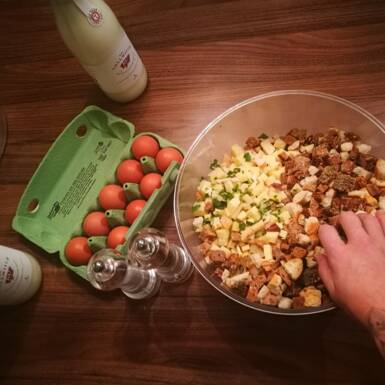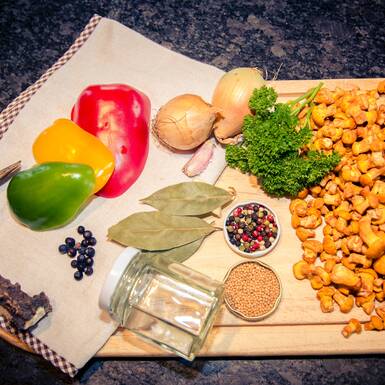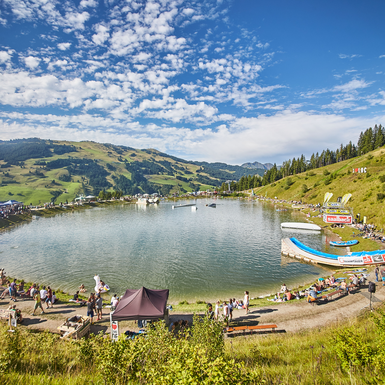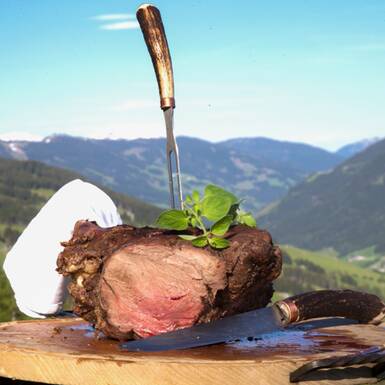- Traditions
Our forest pharmacy
Those who keep their eyes open (and know a little about the plant world) can find useful botanical helpers for ointments, bath additives or oils during a hike in the Home of Lässig. TEH practitioner Susanne Miterer from Naturzauberwerke will take you on a visit to the Waldapotheke.
There seems to be an unlimited supply of hiking trails across the Glemmtal valley. From light family hikes, all the way to the Seven Summits — the hiking routes couldn’t be more diverse, giving every type of hiking enthusiast their money’s worth. But the one thing that unites the lighter and the more difficult tours is the forest. No matter if you are walking along the Saalach river or climbing one of the many mountain summits: the forest is everywhere you look and go. Around 4,000 hectares of forest extend across the entire municipality of Saalbach Hinterglemm and contribute towards the clean air in the Glemmtal valley. If you have ever taken a conscious walk through the forest, then you have probably noticed the cool air there. On hot summer days, the forest provides a more than welcome and refreshing break from the heat. And on top of all of these, the forest also supplies a number of natural remedies.
Needles in the tub
The essential oils and terpenes of coniferous trees have refreshing and disinfecting properties and can also be beneficial for the bronchi. This is why you can add the needle-shaped leaves of a number of coniferous trees to your bath to enjoy their soothing effects or when inhaling steamed herbal solutions to combat a cold.
Coniferous all-rounder
Coniferous trees, such as fir, spruce, larch or pine, secrete resin when the tree is damaged. This resin acts like a plaster. The tree can also protect itself against moisture, pests, fungus and other diseases with a thick layer of resin. This tree resin is referred to as “Pech” locally, and for many years the residents of Pinzgau have made an ointment by combining various tree resins — the “Pechsalbe” (“Resin Ointment”).
Pechsalbe is a tried and tested folk medicine and used to be an essential part of every medicine cabinet. For the resins from which it is made have a wide variety of beneficial properties:
- anti-bacterial and anti-viral
- disinfecting
- stimulate blood circulation
- heal wounds
- dissolve phlegm
- soften the skin
- warm the skin — especially cold feet
- reduce pain and rheumatic ailments and muscles tensions
You can apply this ointment in a variety of ways: It helps with smaller wounds, with infections, tensions, blisters on the hands and feet, but also with cold sores and even coughs. This is why you should always have one of these in your medicine cabinet.
Forest ointment
You probably know the feeling when your legs are heavy and tired after a long hike. You can also refer to the forest pharmacy to prevent and even alleviate sore muscles.
You will need:
- 90 ml 38-42% liquor (e.g. schnapps or vodka)
- Various coniferous tree needles — ideally from young shoots. With the exception of the poisonous yew, you may use all Austrian coniferous trees for this ointment.
- 30 drops of essential camphor oil
Coarsely chop the needles with a knife and fill them into a rinsed jar. Then, fill up the jar with the liquor. You should let this tincture sit in a bright spot but without direct sunlight for 10 to 14 days. Shake it well once every day. After the infusion time, you can filter out the needles and pour the liquor into a bottle together with the essential camphor oil. The ointment is now ready to be applied onto and massaged into the legs after a long hike. Attention! Do not use this ointment over a prolonged period of time, for the alcohol dries out the skin. It also isn’t suitable to be applied onto open wounds.
Spruce “Wipferl”
Among the forest’s best-known treasures are the young coniferous trees’ shoot tips, which can be collected throughout May and June. In Pinzgau, they are referred to as Maiwipferl, Fichtenwipferl or Sprengling. These shoot tips — usually from spruces — are used to make traditional cough syrup. Though not necessarily a remedy, these treats are surely a cure for the soul: chocolate “Maiwipferl”. In order to make them, the spruce tips are simply dipped into molten dark chocolate and then placed on baking paper to dry. Once the chocolate has hardened, the delicious forest pralines are ready to be eaten.
On your next hike, why don’t you have a closer look at all the treasures you can find and collect in the forest? And with our ointment in your backpack, you are most definitely going to have a “lässig” and muscle-soreness-free hiking season!











